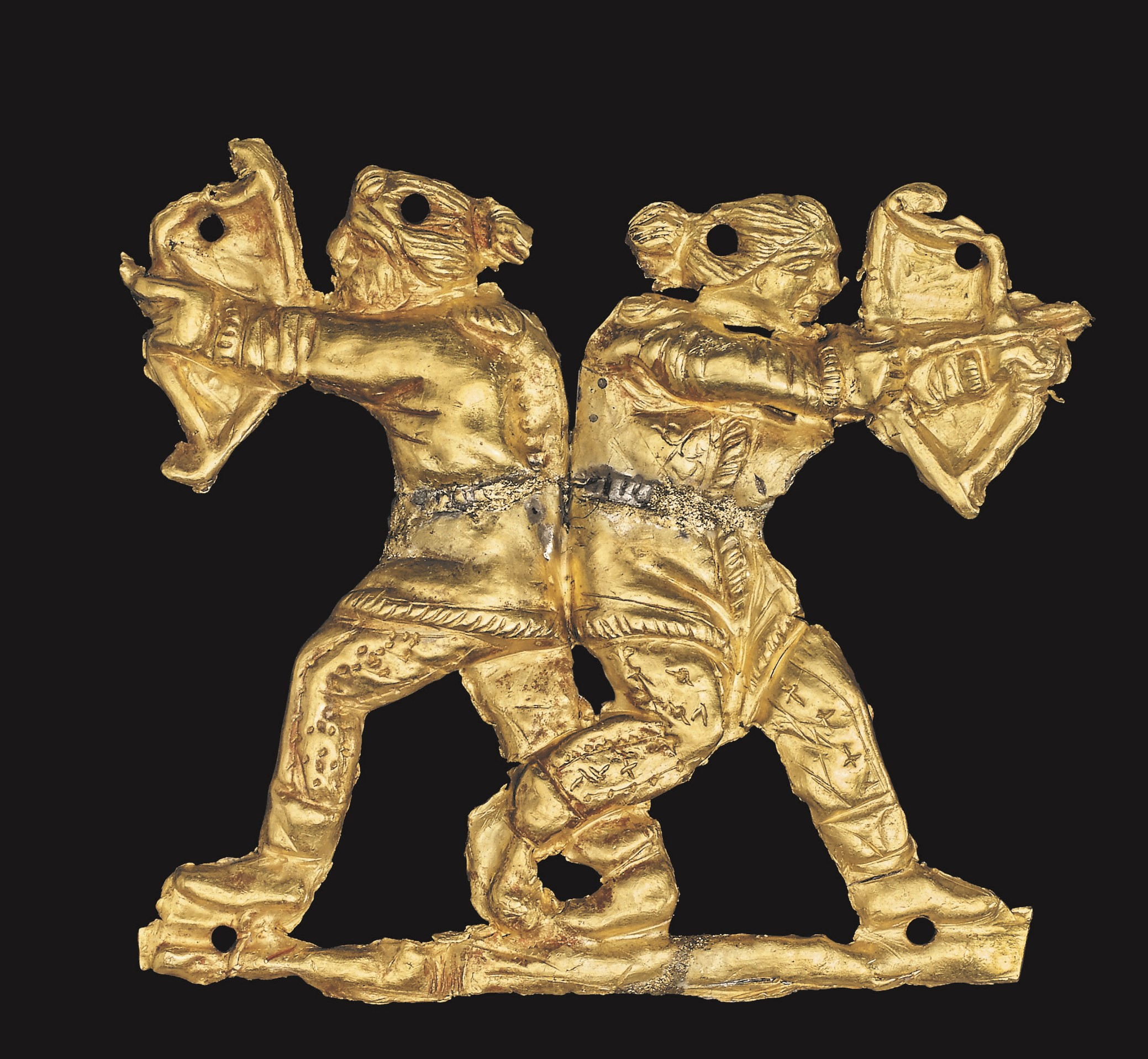Scythian archers 400 BCE
"Babylonian texts frequently mention gimirrāya (literally “Cimmerians”). The reference is probably to members of the Saka (Scythian) tribes of Central Asia, who spoke one of the Old Iranian dialects. In Achaemenid Babylonia they served in the king’s army. Among the Sakai in the Persian army in Babylonia were those whose job it was to guard the boats carrying official cargoes by order of the Persian administration. A document of the year 524 mentions Scythians with the Iranian names Usukaya and Tattakkaya (M. A. Dandamayev, “Saka Soldiers on Ships,” Iranica Antiqua 22, 1982, pp. 101-02).
As early as the seventh century B.C. the Scythians had mounted raids on Western Asia, and a Scythian influence on Babylonian armor is noticeable even before the Persian conquest of Mesopotamia. The soldiers of Nebuchadnezzar II and Nabonidus were often equipped with Scythian bows, Scythian bronze- and iron-tipped arrows, and various other Scythian items including Scythian harnesses for their horses. In the pre-Persian levels at Babylon archeologists have found bronze arrowheads of the Scythian type. These technological borrowings occurred because the Scythian bows were vastly superior to the Babylonian in their ballistic qualities (M. A. Dandamayev, “Data of the Babylonian Documents from the 6th to the 5th Centuries B.C. on the Sakas,” in Prolegomena to the Sources on the History of Pre-Islamic Central Asia, ed. J. Harmatta, Budapest, 1979, pp. 95-109)."
-taken from iranicaonline
 |
| Scythian archers 400 BCE. Gold sew-on clothing appliqué in the form of two Scythian archers back to back, probably blood-brothers. Possibly of Greek manufacture for Scythian buyer. |
Source:
Quote:




Comments
Post a Comment